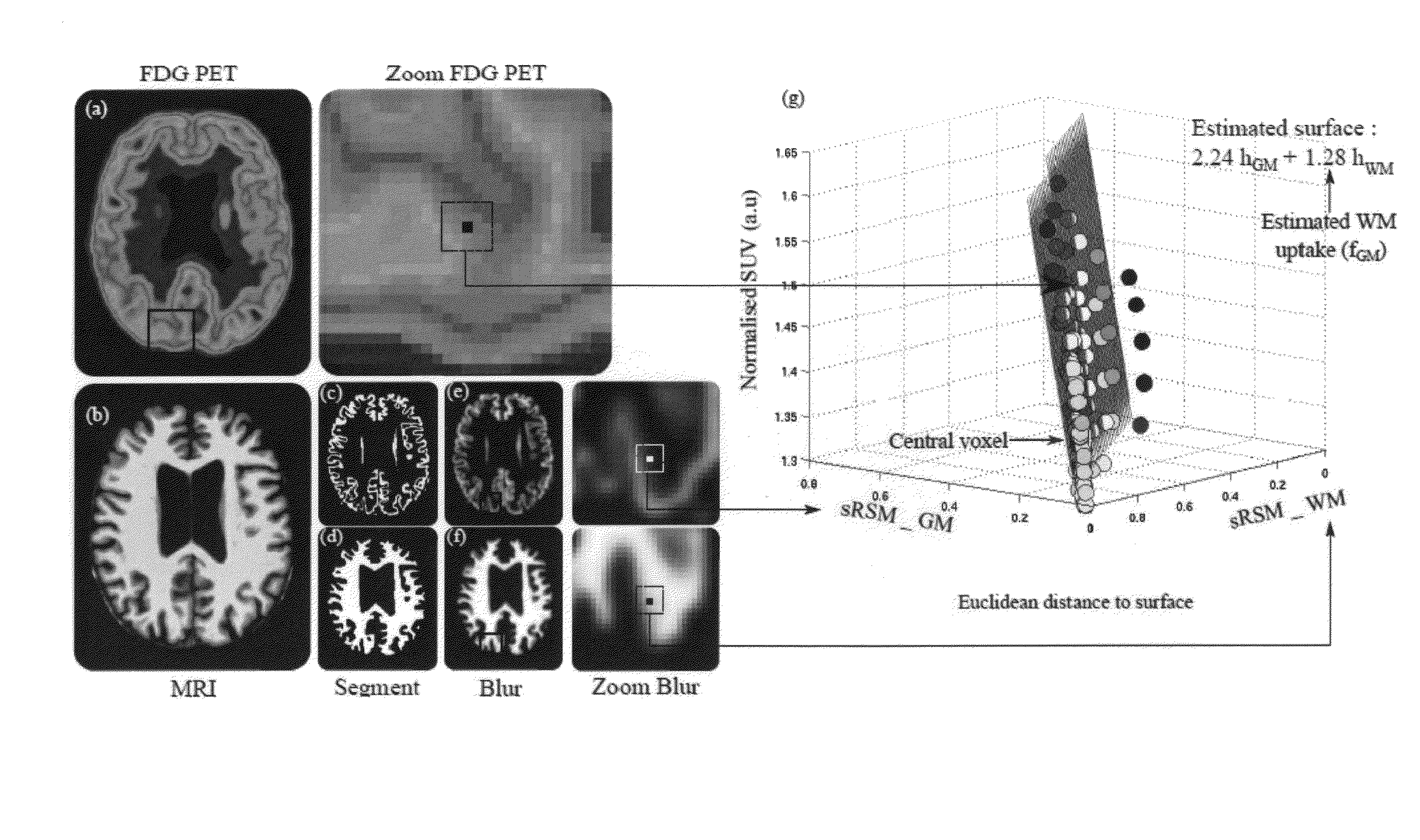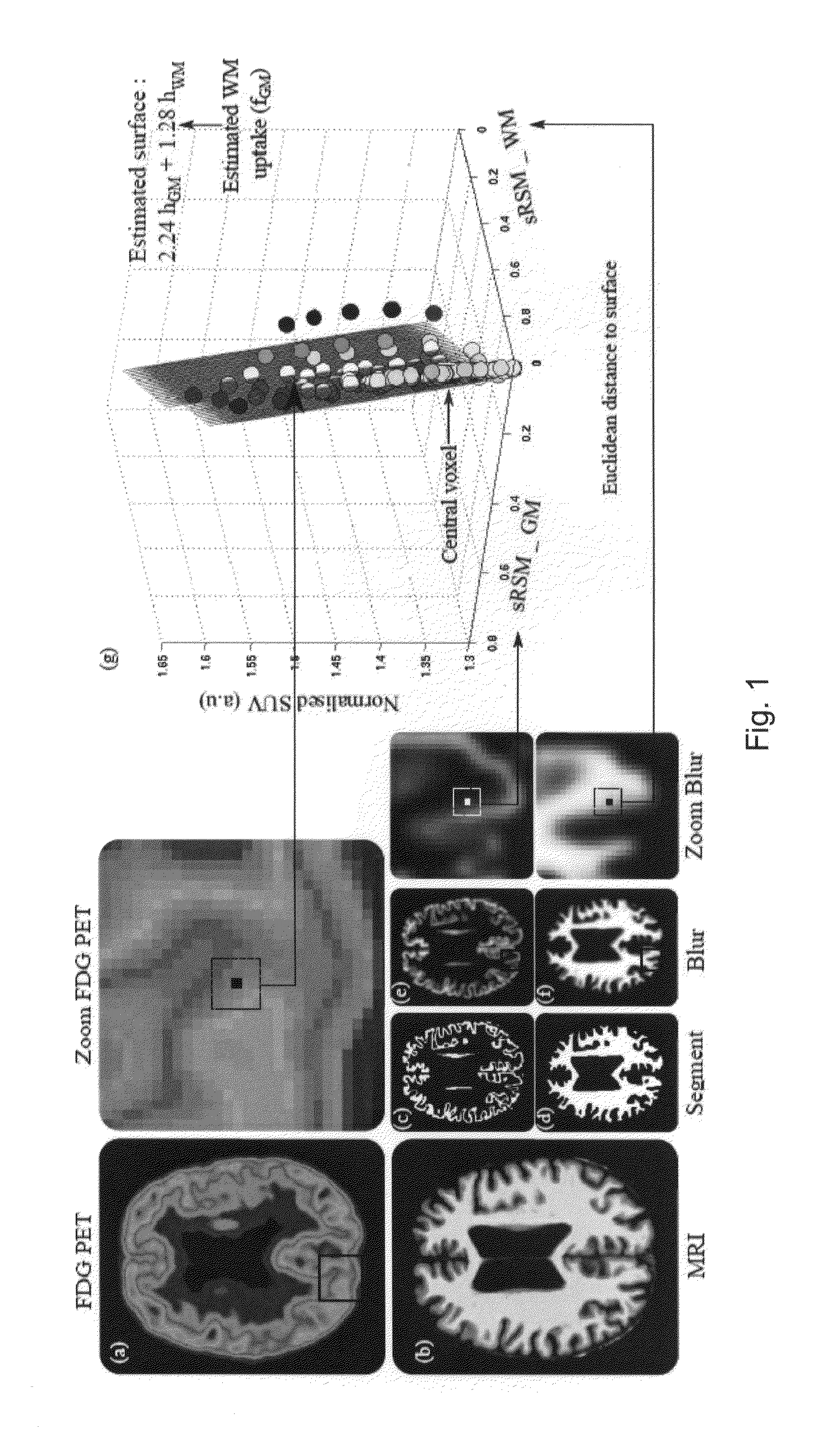Method for improved estimation of tracer uptake in physiological image volumes
- Summary
- Abstract
- Description
- Claims
- Application Information
AI Technical Summary
Benefits of technology
Problems solved by technology
Method used
Image
Examples
Embodiment Construction
[0087]A preferred embodiment is shown in summary by FIG. 1. For this example the anatomical imaging is MRI and the physiological imaging is PET. FIG. 1 illustrates the case where the brain was segmented based on the MRI images into white and grey matter regions. The left column show the original physiologic (a) and anatomical images (b), which are coregistered. The small images (c) and (d) of the lower row show the segmented grey and white matter regions of the MRI image, followed by the results of blurring in (e) and (f). The blown-up cut-outs (PET on top and blurred white and grey matter in the lower part) identify a cube for which the regression analysis was carried out. The result of the regression analysis of corresponding voxels (within the cube) in the three image sets is illustrated by the 3D plot of the regression surface
g(r)=hGM(r)·fGM(r)+hWM(r)·fWM(r)+η(r) (8)
[0088]in which g(r) is plotted against the blurred region hGM(r) and hWM(r). The single points on which the regre...
PUM
 Login to View More
Login to View More Abstract
Description
Claims
Application Information
 Login to View More
Login to View More - R&D
- Intellectual Property
- Life Sciences
- Materials
- Tech Scout
- Unparalleled Data Quality
- Higher Quality Content
- 60% Fewer Hallucinations
Browse by: Latest US Patents, China's latest patents, Technical Efficacy Thesaurus, Application Domain, Technology Topic, Popular Technical Reports.
© 2025 PatSnap. All rights reserved.Legal|Privacy policy|Modern Slavery Act Transparency Statement|Sitemap|About US| Contact US: help@patsnap.com



